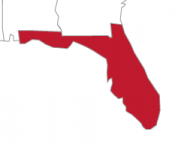Imagine you’re cruising down the highway, your favorite tunes playing, the road stretching out in front of you — it’s the perfect drive. But then, suddenly, the unexpected happens. Maybe it’s a flat tire, an engine sputter, or a warning light flashing on your dashboard. Roadside emergencies can catch even the most experienced drivers off guard, but with a little preparation and know-how, you can handle these situations like a pro.
Flat Tire: Don’t Let It Deflate Your Day
It happens to the best of us. You’re driving along when you feel that tell-tale wobble or hear the dreaded flapping sound of a flat tire. Here’s what to do:
- Stay Calm and Pull Over Safely: Signal, gradually reduce your speed, and find a safe, flat area to pull over. Avoid stopping on curves or hills if you can.
- Turn On Your Hazard Lights: This alerts other drivers that you’re having trouble.
- Change the Tire (If You Can): If you’re equipped and know how, replace the flat with your spare tire. If not, it’s time to call for roadside assistance.
Engine Troubles: Keep Cool Under the Hood
If your car suddenly loses power or you notice smoke under the hood, engine troubles might be brewing.
- Pull Over and Turn Off Your Engine: Find a safe spot to stop and turn off your car to prevent further damage.
- Check for Overheating: If your temperature gauge is in the red or steam is coming from the engine, allow the car to cool down before checking coolant levels or attempting to drive again.
- Call for Help: If the issue isn’t something simple like an overheated engine that needs to cool, it’s probably time to call a professional.
Dead Battery: Jump Start Your Journey
A dead battery can leave you stranded, but it’s often one of the easiest issues to fix.
- Prepare for a Jump: Always keep jumper cables in your car. If you find yourself with a dead battery, you’ll need another vehicle to give you a jump.
- Connect the Cables Correctly: Attach the red clip to your battery’s positive (+) terminal and the black clip to the negative (-) terminal. Repeat with the other car’s battery.
- Start the Donor Car First: Let it run for a few minutes. Then try starting your car.
Running Out of Fuel: A Lesson in Preparation
Running out of gas is an easily avoidable situation, but if it happens, stay calm.
- Pull Over Safely: Get as far off the road as you can.
- Call for Assistance: Many roadside assistance services can bring you enough fuel to get to the nearest gas station.
Locked Out: Accessing Assistance
Getting locked out of your car is frustrating but solvable.
- Stay Calm: Check all doors and the trunk — sometimes one might be unlocked.
- Call for Assistance: If you don’t have a spare key handy, it’s time to call a locksmith or roadside assistance.
Being Prepared: The Ultimate Roadside Assistance Kit
Creating an emergency kit for your car is one of the best ways to prepare for roadside situations. Here’s what it should include:
- Jumper cables
- Spare tire, jack, and lug wrench
- Flashlight and extra batteries
- Reflective triangles or flares
- First aid kit
- Bottled water and non-perishable snacks
- Blanket and warm clothes
- Phone charger
While we can’t predict every bump in the road, being prepared can make all the difference. At 911 Driving School, we equip our students not just with the skills to drive but with the knowledge to handle emergencies with confidence. Remember, the key to effectively managing roadside situations is staying calm, being prepared, and knowing when to call for help.






